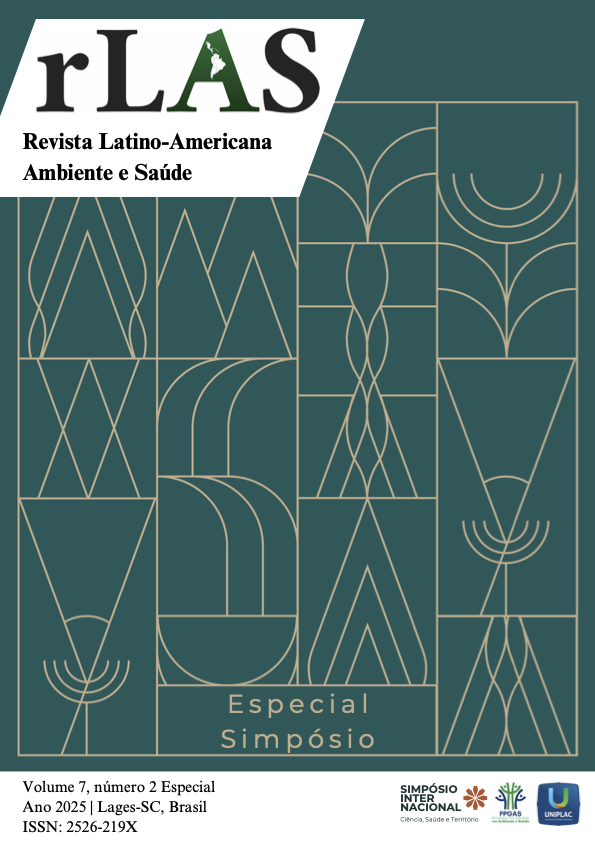Fraturas ósseas: complexidade biológica e avanços terapêuticos com nanotecnologia
Palavras-chave:
Fratura, Formação óssea, NanopartículaResumo
As fraturas ósseas representam um desafio relevante à saúde pública, especialmente em contextos de envelhecimento populacional e crescimento de traumas de alta energia. A reparação óssea é um processo biológico complexo, envolvendo múltiplos tipos celulares, sinalizações moleculares e interações com o microambiente tecidual. Frente às limitações dos métodos tradicionais de tratamento, como enxertos autólogos ou sintéticos, a nanotecnologia surge como alternativa promissora. Este trabalho de revisão discute os mecanismos celulares da osteogênese, as dificuldades enfrentadas nos casos de fraturas complexas e os avanços terapêuticos associados ao uso de nanopartículas bioativas como ferramentas no estímulo à regeneração óssea
Referências
CUMMINGS, S. R.; MELTON, L. J. Epidemiology and outcomes of osteoporotic fractures. The Lancet, London, v. 359, n. 9319, p. 1761–1767, 2002. DOI: https://doi.org/10.1016/S0140-6736(02)08657-9.
DIMITRIOU, R. et al. Bone regeneration: current concepts and future directions. BMC Medicine, London, v. 9, n. 66, 2011. DOI: https://doi.org/10.1186/1741-7015-9-66.
EL-RASHIDY, A. A. et al. Antibacterial nanostructured calcium phosphate for bone tissue engineering. Materials Science and Engineering, v. 70, p. 1–10, 2017. DOI: 10.1016/j.msec.2016.08.076.
GUO, X. et al. Recent advances in the fabrication and application of calcium phosphate-based scaffolds. Journal of Biomedical Materials Research Part B: Applied Biomaterials, v. 108, n. 5, p. 1796–1810, 2020. DOI: 10.1002/jbm.b.34433.
JAMES, S. L. et al. Global, regional, and national incidence, prevalence, and years lived with disability for 354 diseases and injuries for 195 countries and territories, 1990–2019: a systematic analysis for the Global Burden of Disease Study 2019. The Lancet, London, v. 396, n. 10258, p. 1204–1222, 2020. DOI: https://doi.org/10.1016/S0140-6736(20)30925-9.
JOHNELL, O.; KANIS, J. A. An estimate of the worldwide prevalence and disability associated with osteoporotic fractures. Osteoporosis International, London, v. 17, p. 1726–1733, 2006. DOI: https://doi.org/10.1007/s00198-006-0172-4.
KAZEMI, M. et al. Biocompatibility and toxicity of nanoparticles used in bone tissue engineering: A systematic review. Nanomedicine, v. 17, p. 1–16, 2022. DOI: 10.1016/j.nano.2022.102543.
LEE, J. et al. Advances in bone tissue engineering: A focus on delivery of bioactive molecules and bioprinting. Journal of Controlled Release, v. 350, p. 650–667, 2023. DOI: 10.1016/j.jconrel.2023.03.027.
LIU, Y. et al. Nanomaterials for bone regeneration: current status and future perspectives. Journal of Orthopaedic Translation, [S.l.], v. 27, p. 26–41, 2021. DOI: https://doi.org/10.1016/j.jot.2021.01.004.
LIU, Y. et al. Low dose BMP2-doped calcium phosphate graft promotes bone defect healing in a large animal model. Frontiers in Bioengineering and Biotechnology, Lausanne, v. 9, 2021. Disponível em: https://www.frontiersin.org/articles/10.3389/fbioe.2021.785826/full. Acesso em: 16 maio 2025.
LIU, Y. et al. Longitudinal in vivo biodistribution of nano and micro sized hydroxyapatite particles implanted in a bone defect. Frontiers in Bioengineering and Biotechnology, Lausanne, v. 10, 2022. Disponível em: https://www.frontiersin.org/articles/10.3389/fbioe.2022.1076320/full. Acesso em: 16 maio 2025.
MA, Q. et al. Surface modification strategies of biomaterials for enhancing osteogenic differentiation. Materials Today Bio, v. 16, 2022. DOI: 10.1016/j.mtbio.2022.100377.
MORRIS, Z. et al. The global burden of fractures and the role of public health interventions. The Lancet Public Health, v. 7, n. 3, p. e212–e220, 2022. DOI: 10.1016/S2468-2667(21)00227-3.
PAPELEIRO, L. B. et al. Perfil epidemiológico de pacientes vítimas de acidentes automobilísticos com fraturas múltiplas em hospital terciário. Revista Brasileira de Ortopedia, v. 55, n. 1, p. 46–52, 2020. DOI: 10.1055/s-0039-1693980.
SANTOS, L. M. et al. Translational challenges in nanomedicine: From bench to bedside. Frontiers in Bioengineering and Biotechnology, v. 11, 2023. DOI: 10.3389/fbioe.2023.1175142.
SHARMA, S. et al. The socioeconomic burden of fracture healing and non-union: A global perspective. Injury, v. 52, n. 5, p. 995–1003, 2021. DOI: 10.1016/j.injury.2021.03.017.
TONG, X. et al. Smart nanocarriers for targeted delivery of osteoinductive agents. ACS Nano, v. 16, n. 4, p. 5538–5554, 2022. DOI: 10.1021/acsnano.1c10544.
WEN, J. et al. Fracture patterns and risk factors associated with extreme sports injuries: A systematic review and meta-analysis. Injury, [S.l.], v. 55, n. 1, p. 23–30, 2024. DOI: https://doi.org/10.1016/j.injury.2023.10.002.
WANG, Z. et al. Potential osteoinductive effects of hydroxyapatite nanoparticles on mesenchymal stem cells by endothelial cell interaction. Nanoscale Research Letters, Berlin, v. 16, p. 67, 2021. Disponível em: https://nanoscalereslett.springeropen.com/articles/10.1186/s11671-021-03522-1
YANG, L. et al. Recent advances in nanomaterials for bone tissue engineering. Biomaterials Science, v. 9, p. 6713–6731, 2021. DOI: 10.1039/d1bm00846f.
ZHANG, X. et al. Recent advances in biomaterials for the treatment of bone defects. Regenerative Biomaterials, v. 8, n. 4, 2021. DOI: 10.1093/rb/rbab024.
ZHANG, J. et al. Antibacterial and osteogenic stem cell differentiation properties of photoinduced TiO₂ nanoparticle-decorated TiO₂ nanotubes. International Journal of Nanomedicine, Auckland, v. 10, p. 6505–6517, 2015. Disponível em: https://www.ncbi.nlm.nih.gov/pmc/articles/PMC4587363/
ZHANG, Y. et al. Electrospun nanofibers containing chitosan-stabilized bovine serum albumin nanoparticles for bone regeneration. International Journal of Biological Macromolecules, Amsterdam, v. 209, p. 930–940, 2022. Disponível em: https://pubmed.ncbi.nlm.nih.gov/35803032/
ZHOU, H. et al. Smart biomaterials for bone regeneration: Integration of biology and materials science. Acta Biomaterialia, v. 127, p. 49–67, 2021. DOI: 10.1016/j.actbio.2021.03.006.


